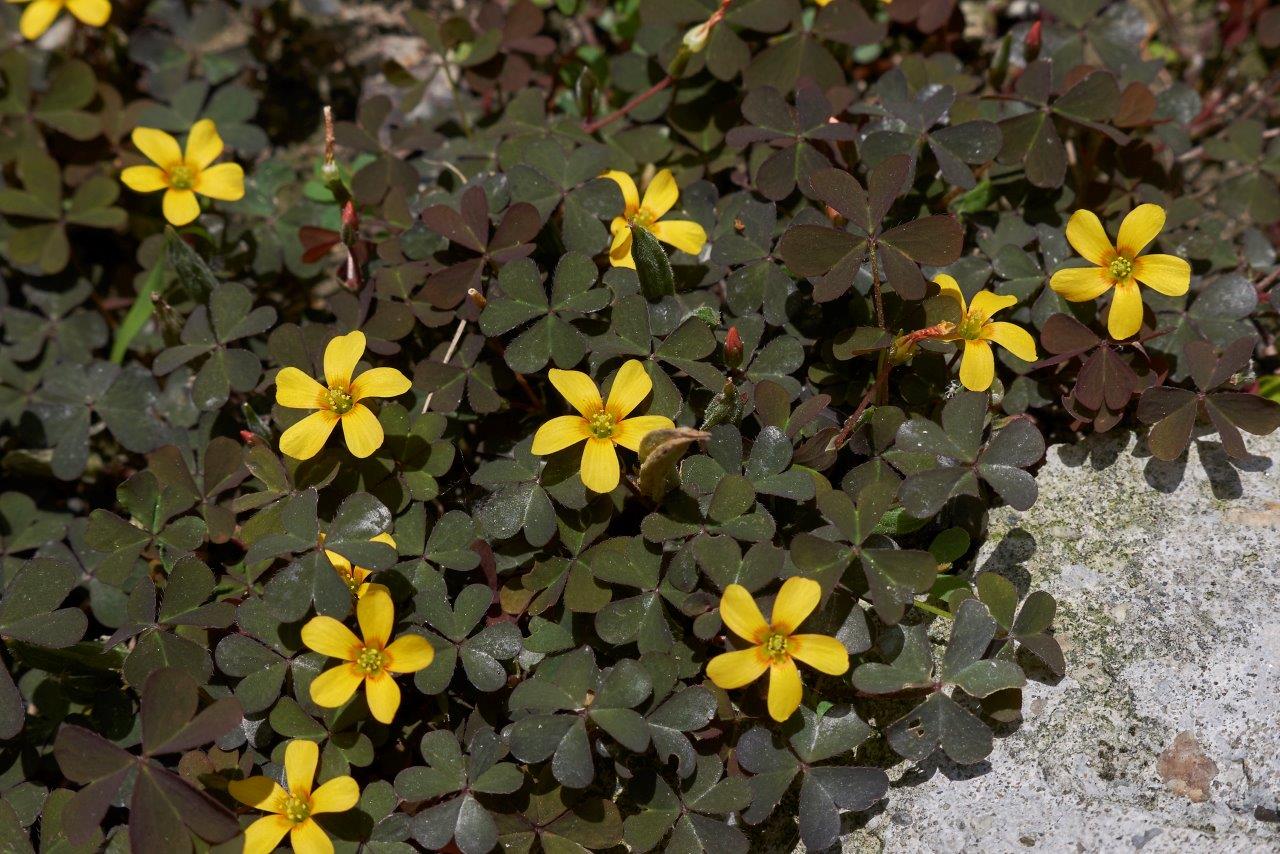Creeping Oxalis Weed: How to Kill Without Effecting Grass
Author: Stefan Palm Date Posted: 7 November 2023
Creeping Oxalis (Oxalis Corniculta) is a broadleaf, highly invasive, hard to control weed. Most gardeners will have experienced this weed at one time or another and will know how persistent it is. So how can you control it?
Over the past month, we've had quite a number of people asking us for advice on how to control this weed in their lawn and garden. Ironically, most have had a good go at trying to get rid of it but have been unsuccessful for one reason or another. Like many weeds, the secret to controlling it is a persistent, programmed approach coupled with some knowledge about the weed.
Understanding and Managing Creeping Oxalis in Your Lawn and Garden
Creeping Oxalis commonly comes in 2 forms - green and purple. The green form is generally finer than the purple form however, both can be said to have very small, clover-like leaves that are around 5mm or less in diameter. In Spring and Summer, the weed displays small yellow flowers which have 5 petals. When the flowers mature, they release a seed pod that is filled with fine seeds. Upon release, these seeds spread throughout your lawn and garden.

Photo: Creeping Oxalis - Green form

Photo: Creeping Oxalis - Purple Form
As the name suggests, creeping oxalis spreads quickly, both by seed and by its spreading nature. Its habit includes masses of fine runners that send down small taproots at regular intervals. This makes it impossible to pull out by hand, leaving gardeners to eradicate it by chemical means. Even with the right chemical measures, you'll need to be patient in your approach, waiting around six weeks to get good control. It is resilient, to say the least, and can easily re-invade through seeds germinating in the soil.
How to Kill Oxalis But Not Grass?
- Use the right chemical: There are a lot of selective, broadleaf herbicides available that say they control creeping oxalis. You've probably tried one or two if you've been fighting with this weed. While you can have success with most of them, you'll have to be persistent and prepared to spray many times - I'll go one step further and say "a lot" of times. Over the last year, a newer type of chemical called Clopyralid combined with Diflufenican has become available - Its common name is Bow and Arrow. Bow and Arrow is amazing on creeping oxalis - you'll generally get on top of it in two sprays. Ironically, it's less toxic than most of the others too! I'd suggest adding some non-ionic wetting agent to your spray mix to enhance its effectiveness. Always mix up your chemicals as per the label - if you don't do this, you risk damaging your lawn.
- Spray at regular, timed intervals: As I mentioned before, you'll need to spray around two times with Bow and Arrow, three weeks apart.
- Avoid hose on applicators: With this weed, it's better to buy a concentrate chemical, mix it up in a sprayer and apply. Hose-on applicators can tend to apply a solution that is too watered down, resulting in less effectiveness against persistent weeds like creeping oxalis. They also don't allow you to add a wetter to the mix, which is critical.
- Don't spot spray: Spray your whole lawn instead of spot spraying because it's hard to see the extent of how much weed you have. You only have to miss a small section of creeping oxalis to allow it to re-invade all over again.
- Pre-emergent backup: If you've had creeping oxalis for a while, you probably got a reasonable amount of its seed in the soil, waiting patiently to germinate. Once you've got rid of the weeds you can see, consider applying some Spartan. Spartan is a pre-emergent herbicide that will ensure no new seeds germinate.
As I mentioned earlier, persistence is the key - expect it to bounce back and fight its demise every step of the way but be assured, you can win the battle!


